GardenerHeaven.com is reader-supported. When you buy through links on our site, we may earn an affiliate commission.
.jpg)

Photo Credits: Gardenerheaven.Com by Lawrence Lee
Understanding the choke function on lawn mowers is essential for efficient and effective operation. In this comprehensive guide, we will explore the importance of comprehending the choke function and the purpose of this in-depth resource. Discover how a proper understanding of the choke function can enhance your lawn mowing experience and ensure optimal performance. Get ready to dive into the intricacies of this vital component and master its usage for maintaining a pristine lawn.
Importance of Understanding the Choke Function
The choke function of a lawn mower is essential. It controls the fuel mixture, for a smooth engine startup and efficient running. Without knowing how to use it, users may struggle to start the mower, or have poor performance. Therefore, understanding the choke is key!
The choke restricts the airflow, for a rich fuel mix – perfect for cold starts. As the engine warms, the choke gradually opens, for a leaner mix and better power. Knowing how to manipulate and adjust the choke makes for a smooth start and top performance.
To reach the correct air-fuel ratio, the choke must be used correctly. Too much or too little air can lead to inefficient burning and reduced output. Understanding operation and adjustment ensures the right air-fuel mixture, for peak performance.
Learning the choke’s importance helps users troubleshoot starting problems. Knowing where to locate and inspect the choke allows for good maintenance, ensuring the mower’s longevity and durability. Understanding all aspects of chokes optimizes user experience, and improves efficiency in lawn care.
Purpose of the Comprehensive Guide
This guide is here to help you understand the choke function on lawn mowers. It explains why you need to know how the choke works, the importance of the fuel mixture, and the need to keep an optimal air-fuel ratio. By finding and understanding the choke, you can start and use your lawn mower. Plus, this guide tells you how to maintain and look after the choke, to keep it running smoothly. So, get ready to explore the mysterious world of choke operation and discover the secrets of how your lawn mower works!
How the Choke Works
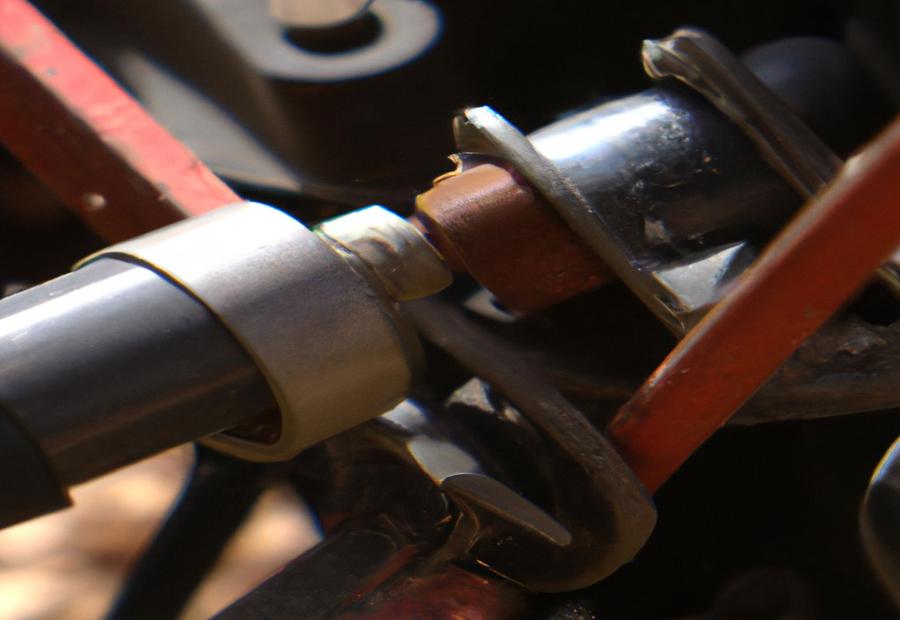
Photo Credits: Gardenerheaven.Com by Thomas Perez
The “How the Choke Works” section uncovers the inner workings of the choke, shedding light on its role in lawn mower operations. From explaining the choke’s operation to delving into its impact on the fuel mixture, this section provides valuable insights into the importance of maintaining a proper air-fuel ratio for optimal performance.
Explanation of Choke Operation
The choke is key to a lawn mower’s functioning. It controls the airflow and fuel mixture during starting, supplying the right amount of fuel for smooth ignition. The choke restricts the airflow, creating a richer fuel mixture for cold starts. Too lean or rich a fuel mix can lead to issues like inadequate lubrication, overheating, and sluggish performance.
Locating the choke lever depends on the mower model. It could be near or integrated with the throttle control, or have its own lever or button. To operate the choke for a cold start, engage full throttle and pull the lever until resistance is felt. Allow warm-up time after starting to ensure optimal engine performance.
Regular maintenance and care of the choke is crucial. Clean it often and inspect it for wear or damage. Knowing how the choke works will extend your mower’s lifespan and help avoid starting problems and costly repairs. Take the time to learn about your mower’s choke system and use it properly in your lawn care routine for a better experience.
Impact of Choke on Fuel Mixture
The choke of a lawn mower is key for regulating the fuel mixture. It adjusts the amount of air entering the engine, which affects how much fuel is delivered. This is crucial for efficient combustion.
Closing the choke limits airflow to the carburetor, making the fuel mix richer. This helps with cold starts, as a rich fuel mix helps ignite the engine.
Opening the choke to its max lets the most air into the engine, leading to a leaner fuel mix. This lean mix is good for normal operation, promoting better combustion and reducing emissions.
Knowing how to use the choke is essential for optimal lawn mower performance. During cold starts, engaging the choke may be necessary to enrich the fuel mix and start the engine. After starting, reducing or disengaging the choke helps transition to normal operation.
Regular maintenance and inspection of the choke is important for proper functioning. Cleaning any debris or obstructions in the choke can help prevent issues and maintain performance.
The choke is like having the perfect wingman for your lawn mower – it ensures smooth operation and maximum performance.
Importance of Proper Air Fuel Ratio
Maintaining the proper air fuel ratio is key for a lawn mower. The choke plays a major role in this. It regulates the fuel burning by controlling the air flow to the engine. Balancing the air fuel ratio results in more power and less emissions.
The choke restricts the air supply when the engine is cold or is starting up. This heightens the fuel concentration to make ignition and running smoother. If the air fuel ratio is off, then poor start up, stalling or rough running may occur.
Understanding how to adjust the choke lever is necessary to get the right air fuel mixture. The lever is located in the carburetor and should be adjusted according to the manufacturer’s instructions.
Regular maintenance of the choke is also important. Debris buildup can affect the choke plate’s performance. Cleaning it regularly prevents any issues from clogged or malfunctioning chokes.
Locating the Choke
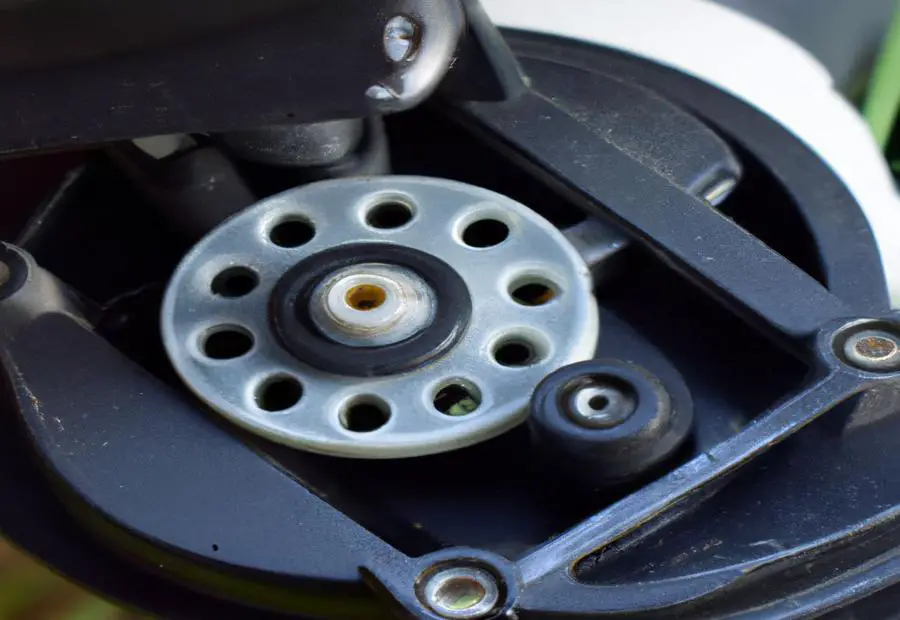
Photo Credits: Gardenerheaven.Com by Jordan Williams
When it comes to understanding the choke function on lawn mowers, a crucial first step is locating the choke. In this section, we will explore the different choke locations on lawn mowers and develop a better understanding of the choke lever. So, let’s dive in and discover how to effectively locate and utilize the choke on your lawn mower for optimal performance.
Different Choke Locations on Lawn Mowers
Locating the choke lever on a lawn mower is essential for proper use and maintenance. Knowing the different choke locations on different lawn mowers is key to utilizing the function properly.
- Often the choke lever is near the carburetor or air intake. This makes it simple to adjust when starting the mower.
- Sometimes, the choke lever is on the engine near the throttle control. This allows convenient operation and quick adjustment when starting or running the mower.
- Plus, certain models have electronic choke systems. There is no physical lever and the system is operated with a switch or button on the lawn mower’s control panel.
Knowing these locations aids users in finding and engaging the choke mechanism quickly. Different models may vary in terms of choke location, so consult the user manual or manufacturer’s instructions for exact information. Familiarizing oneself with these variations helps users get the most out of their lawn mowers.
Start your lawn mower with ease – discover the power of the choke lever!
Understanding the Choke Lever
The choke lever is a must-have part of a lawn mower’s engine. It controls the air and fuel mixture that enters the combustion chamber. It’s key for proper mower function.
The lever regulates air, which alters the fuel mixture. It has three positions: “choke,” “half-choke,” and “off.” Knowing these settings correctly ensures efficiency and prevents stalling.
Keeping the lever in good condition will make it last longer and help avoid starting or running problems.
The location of the choke lever differs depending on the model. It’s usually near the engine or carburetor, and labeled for easy recognition.
Remembering how to operate the lever during cold starts is important. Setting it to the right position is needed for a smooth cold start.
Regular maintenance and checks should be done to prevent issues. Clean the choke mechanism often to get rid of dirt and debris.
Starting and Operating with the Choke
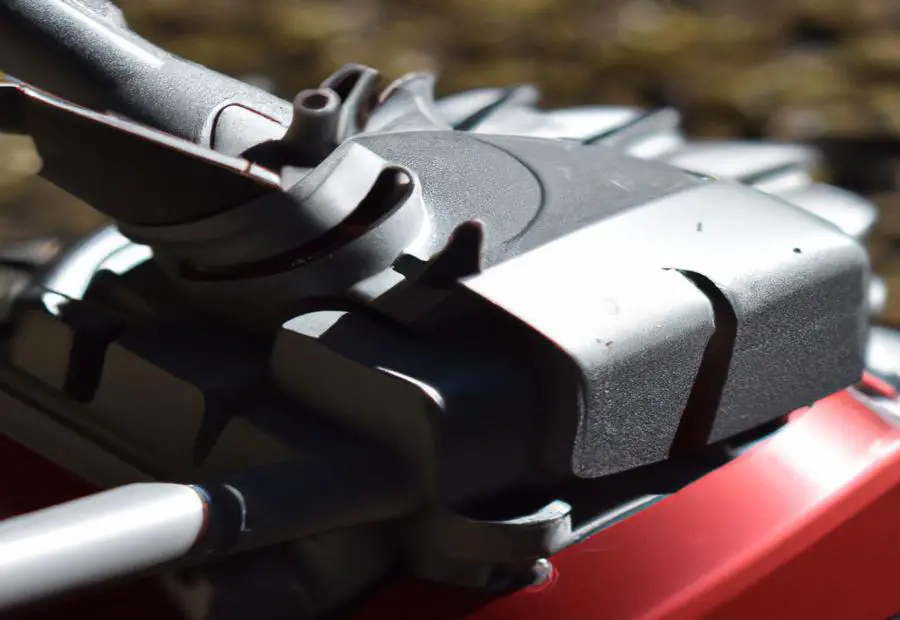
Photo Credits: Gardenerheaven.Com by Jacob Thomas
Starting and operating your lawn mower with the choke is a crucial aspect to ensure smooth performance. In this section, we will discuss the steps involved in the cold start procedure, address common starting problems, troubleshoot any issues, and explore how to operate the lawn mower effectively while utilizing the choke. With these insights, you’ll be equipped to handle the choke function with ease, promoting optimal functioning of your lawn mower.
Cold Start Procedure
Cold start procedure is a must for lawn mowers that have been idle for a while. To begin, check the choke lever is closed. Then, prime the engine by pushing the primer bulb 3-4 times. Set the throttle lever to ‘fast’. Finally, pull the starter cord or press the electric start button. As the engine starts, open the choke lever gradually. This provides enough fuel mixture for a smooth start in cold weather.
Bear in mind, it might take a few attempts to get it running due to temperature and fuel variables. Keep trying until you get a smooth start. Troubleshooting your lawn mower is now more exciting than guessing your ex’s text replies!
Starting Problems and Troubleshooting
Starting with a lawn mower can be tricky when the choke is involved. Knowing about potential issues is key to starting up smoothly and reducing disruptions.
- Difficult start: When the engine won’t ignite, even after multiple tries, it could be because of the choke lever’s position or fuel mix.
- Engine stops quickly: If the engine starts, but then stops soon after, the choke may be adjusted wrong, leading to bad air-fuel balance.
- Poor idle: If the engine runs erratically, it could be due to a dirty or clogged choke. This messes with air and fuel flow, resulting in bad idling.
- Flooding: Excessive fuel entering the engine can lead to flooding. This happens when the choke fails to regulate fuel flow.
- Uneven performance: When starting is sporadic or unpredictable, there could be an issue with the choke. Regular inspection and cleaning is important for troubleshooting.
Clean and adjust the choke regularly. This can help avoid problems. Knowing about common starting issues and how to address them helps keep your lawn mower running well for longer.
Operating the Lawn Mower with the Choke
- Before starting, make sure the choke is closed. This lets in less air into the carburetor, enriching the fuel mixture.
- Turn the switch or pull the starter cord to start the engine. The richer fuel mix helps cold starting.
- Gradually open the choke as the engine runs smoothly. This balances the air-fuel ratio.
- Monitor engine performance. If you notice rough running or stalling, adjust the choke slightly.
- When done using the lawn mower, close the choke before turning it off. This prevents fuel system issues.
Remember – engage or close the choke when starting, then open gradually. Pay attention to engine performance and adjust if needed. Close the choke when turning off. This will make sure your lawn mower runs smoothly.
Choke Maintenance and Care
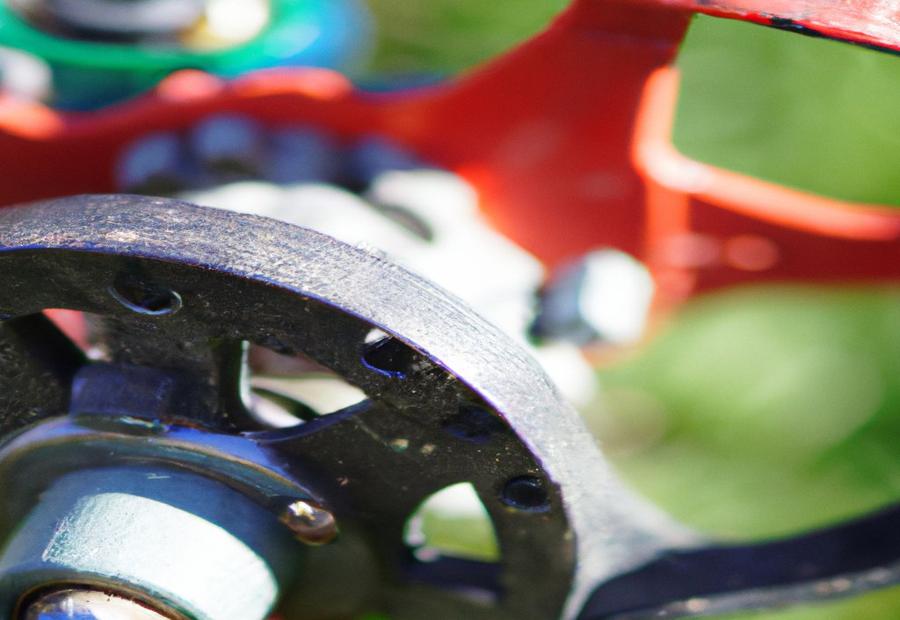
Photo Credits: Gardenerheaven.Com by Wayne Wilson
Maintaining and caring for the choke mechanism is crucial for the optimal functioning of lawn mower engines. In this section, we will explore the essentials of choke maintenance, including cleaning the choke mechanism and performing regular maintenance and inspections. By following these guidelines, you can ensure that your lawn mower’s choke operates smoothly and efficiently, enhancing the overall performance of the machine.
Cleaning the Choke Mechanism
To keep your lawn mower’s choke mechanism in top condition, follow these 5 steps:
- Remove the air filter cover. Locate it, then use tools to remove any screws or clips. Carefully lift off the cover.
- Access the choke mechanism. Note its position and how it works.
- Spray on a carburetor cleaner. Make sure all parts of the choke are coated.
- Scrub and wipe clean. Use a brush or cloth to get rid of dirt and buildup. Pay attention to small crevices.
- Reassemble and test. Put everything back together properly, then start the mower to check its functionality.
Remember to consult your mower’s user manual for manufacturer recommendations. Inspect fuel lines and filters for signs of clogging or damage, which can affect the choke mechanism. Cleaning and maintenance will optimize performance and extend lifespan.
Regular Maintenance and Inspection
Regular maintenance and inspection are vital for the choke on lawn mowers to work correctly. These regular tasks help to spot any issues or faults in the choke, so repairs and adjustments can be done quickly.
- Cleaning: A major part of maintenance is to regularly clean the choke. This removes any dirt, debris, or buildup that might stop it from working properly. Cleaning the choke makes sure it can move smoothly and avoids clogs.
- Inspecting: Examining the choke for any damage is also important. Check for cracks, corrosion, or wear and tear that may affect its performance. Find these problems early so you can get repairs right away.
- Lubricating: Lubricating the choke is essential too. Put on a suitable lubricant to make sure it moves well without friction-related problems. Lubricating the choke regularly increases its life and performance.
Keep in mind, regular maintenance and inspection should follow the manufacturer’s rules. This guarantees all elements of the choke are taken care of.
Pro Tip: Make a schedule for your lawn mower’s choke maintenance. This keeps you organized and ensures you don’t forget to look after this crucial component.
Conclusion
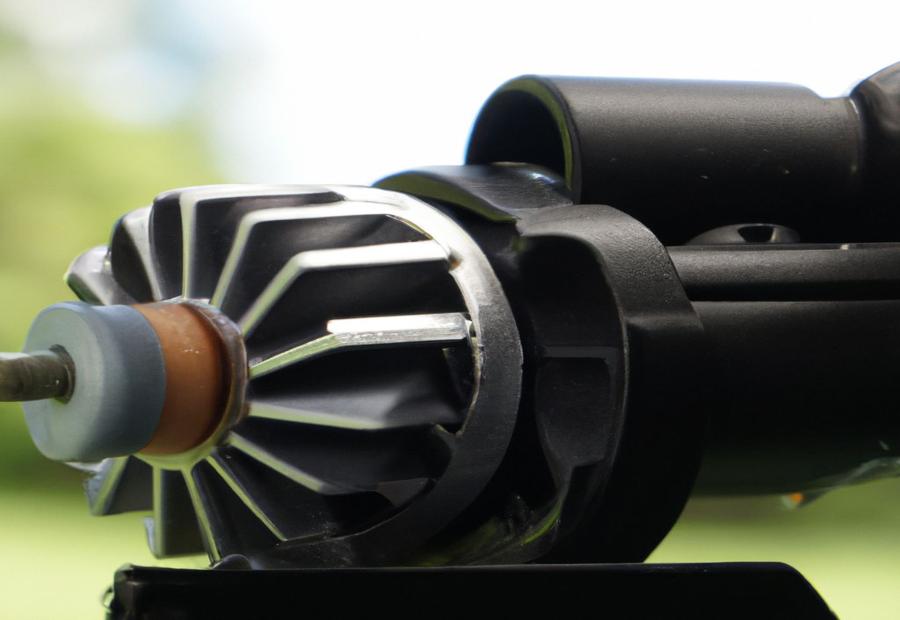
Photo Credits: Gardenerheaven.Com by Ralph Anderson
The choke function on lawn mowers is a must-have! It affects performance greatly. Knowing how it works is key for optimal use. It controls the air and fuel mix during startup. Without proper operation of the choke, the engine may not start or run poorly.
When the choke is engaged, it limits airflow to the engine. This creates a richer fuel mixture, which is necessary during startup. As the engine warms up, the choke should be disengaged. This allows for a leaner fuel mix and unrestricted airflow, resulting in efficient combustion and engine performance.
Different lawn mowers can have different choke mechanisms. These include manual and automatic chokes. Manual chokes require adjusting by the user, while automatic ones adjust based on engine temperature. Knowing the specific choke mechanism of your lawn mower is vital for proper use.
To optimize the performance of the choke, start the lawn mower with it fully engaged. Then, gradually disengage it as the engine warms up. This prevents flooding the engine with too much fuel and allows for smooth operation. Regular maintenance of the choke, such as cleaning and lubrication, will also ensure its proper functioning.
In short, the choke function is a major part of lawn mower performance. Knowing how it works and how to properly use it is essential for successful engine startup and overall lawn mower performance. Following the recommended procedures and maintaining the choke will make sure your lawn mower starts easily and runs smoothly.
Some Facts About Understanding the Choke Function on Lawn Mowers: A Comprehensive Guide:
- ✅ The choke on a lawn mower controls the ratio of gasoline to air in the carburetor, which is essential for starting the engine. (Source: Team Research)
- ✅ Choke levers or primer bulbs are common features on small engines like those in lawn mowers. (Source: Team Research)
- ✅ The choke restricts the flow of air into the combustion chamber, allowing the fuel to heat up quickly and start the engine. (Source: Team Research)
- ✅ Running the lawn mower with the choke on for an extended period can cause the engine to overheat and use more gasoline. (Source: Team Research)
- ✅ Some lawn mower models have manual chokes, while others have automatic chokes that adjust based on temperature. (Source: Team Research)
FAQs about Understanding The Choke Function On Lawn Mowers: A Comprehensive Guide
What does the choke do on a lawn mower?
The choke plays an essential role in starting the engine of a lawn mower by controlling the ratio of gasoline to air in the carburetor. It restricts the flow of air into the combustion chamber, allowing the fuel to heat up quickly and start the engine.
Where can I find the choke on a Toro riding lawn mower?
The location of the choke can vary depending on the mower model, but it is usually found near the carburetor or air intake. Refer to the owner’s manual or the manufacturer’s instructions for the specific location of the choke lever.
How should I use the choke when starting the engine?
To start the mower, the choke lever should be activated by positioning it between the fast and slow settings or pulling it upward past the fast setting. This enriches the fuel mixture for a cold engine to start smoothly. Once the engine warms up, the choke lever should be returned to normal to allow for a lean mixture.
What problems can arise from running the lawn mower with the choke on?
Running the lawn mower with the choke on for an extended period can cause the engine to overheat and use more gasoline. It can also lead to decreased power, increased pollution, and potential damage to engine components.
What is the choke symbol in lawnmowers and how does it work?
The choke symbol indicates whether the choke valve is open or closed. When the choke is closed or in the “On” position, it restricts airflow into the carburetor, allowing for a perfect mix of fuel and air to start the engine. When the choke is open or in the “Off” position, air flows freely into the cylinders, indicating that the engine has been warmed up enough to be operated.
How do I fix a stuck choke on my Toro lawn mower?
If the Toro lawn mower choke is stuck, steps can be taken to try and fix the problem. This includes checking the fuel tank, fuel filter, and spark plug for any issues. Additionally, pushing the control knob in and out may help resolve the stuck choke. If the problem persists, it is recommended to seek assistance from a qualified repair shop.




